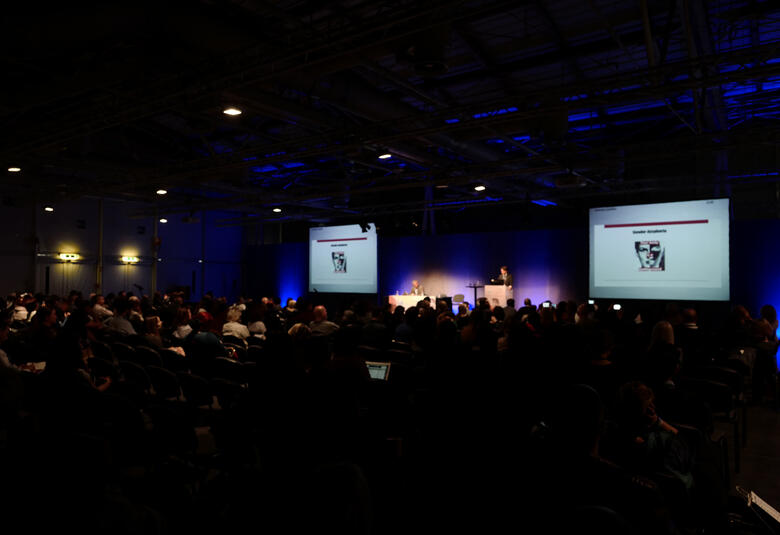Poor functioning is an acknowledged hallmark of schizophrenia. To study it effectively, having common descriptive standards for functional deficits is crucial and was discussed at SIRS, Florence 2016. Delegates attending SIRS 2016, Florence, Italy, learned how the WHO created the ICF-CS – a classificatory system to describe functional deficits in schizophrenia. But first, considered the functional deficit of social disconnectedness (SD) in schizophrenia and its important consequences.
Social disconnectedness – not the same as just plain lonely
SD, unlike loneliness, is an objective term to describe social isolation, Junghee Lee, UCLA, Los Angeles, USA, explained. It is prevalent in schizophrenia and is important because it affects survival direly – and to a greater extent than smoking. Unlike loneliness, you can die from SD.
Both social cognition and affiliation are affected in psychosis. This makes its study difficult. After all, how to you recruit socially-reclusive people to a clinical study?
‘Lonely hearts’ pages
By advertising, it would appear! Two small adverts were posted requesting people with few friends and no real inclination to make friends to respond. And respond they did – 66 calls over 3 days. By a sifting process, the general population was enriched for 28 individuals who were engaged in the community (i.e. they worked) but were socially isolated.
Unlike patients with schizophrenia, however, such individuals showed no evidence of social cognition deficits. They did show low levels of social affiliation. It seems, in the community, there are people who naturally avoid social situations. Intriguingly, their curiosity as to why this might be was what induced them to answer the ads.
ICF Core sets – what are they?
Melissa Selb, of the WHO ICF Research Branch, Germany,, explained how, as part of its drive for health for all, the WHO has changed tack. Now instead of compiling only mortality and morbidity (ICD) statistics, it is collating the associated functioning and disability (ICF) that accompanies a condition.
Functioning and disability refer to a person’s:
-
Participation – e.g supported work programme
-
Activities e.g ability to wash oneself
-
Body function e.g thought function
-
Body structure e.g brain function
-
Environmental interactions e.g medication, family
Aspects of each of these were taken into consideration when creating the ICD-11 report with specific reference to schizophrenia. In total, 1400 ICF categories were described. As these are cumbersome to use, ICF core sets and brief core sets have been developed, making the classification system more user-friendly.
The ICF core sets were developed in 3 phases: a preparatory phase, phase I and phase II. Currently, the guidelines are in Phase II of development but the other phases were outlined.
Preparation...
Georgina Guilera, University of Barcelona, Spain, described the initial preparatory phase of the WHO project. Here the functional and environmental factors associated with schizophrenia were considered from 4 perspectives – clinical, research, patient and health care professional.
Clinical Perspective - multicentre study
To address the clinical perspective, an empiric, multicentre study was conducted. Five Spanish centres contributed to this study and data were collected by health care professionals using the extended WHO checklist. Their responses were extracted and translated into ICF categories. ICF categories described functional impairment in body function (32), activities and participation (45) and environment (18).
Research perspective - literature review
A systematic literature review was undertaken to address the research perspective. A total of 206 studies identified ICF categories. These described functional impairment in body function (30), body structure (2) activities and participation (34) and environment (4).
The mortality associated with social disconnectedness in schizophrenia is greater than for smoking
Patient perspective - 11 focus group
For the patients’ perspective, a qualitative study was undertaken comprising 11 focus groups (7 for patients and 4 for caregivers) in Spain and US. The outcomes yielded ICF categories for body function (45), body structure (6) activities and participation (60) and environment (38).
And Phase I...
Overall, the preparatory phase identified 184 candidate categories – clearly far too many for daily use. Oscar Pino, University of Barcelona, described how these were whittled down to generate comprehensive ICF core sets and brief core sets.
Consensus of core and brief sets
International experts in schizophrenia from a variety of fields were invited to consider the candidate categories and to achieve consensus on the minimum that should be included. This minimum number should describe exhaustively the key functional disabilities of those with schizophrenia. If consensus was less than 40%, categories were excluded; if consensus was greater than 75%, they were kept. Those falling between these values were discussed in a second session to attain consensus.
Eventually, a comprehensive ICF core set was achieved containing 97 ICF categories: body function (17), body structure (0) activities and participation (48) and environment (32). Following further discussion and some serious ranking, a brief core set of 25 ICF categories was agreed.
And phase II
Now that all this work has been completed, validation of the categories generated in phase I is being undertaken. Outcomes are awaited with interest.



